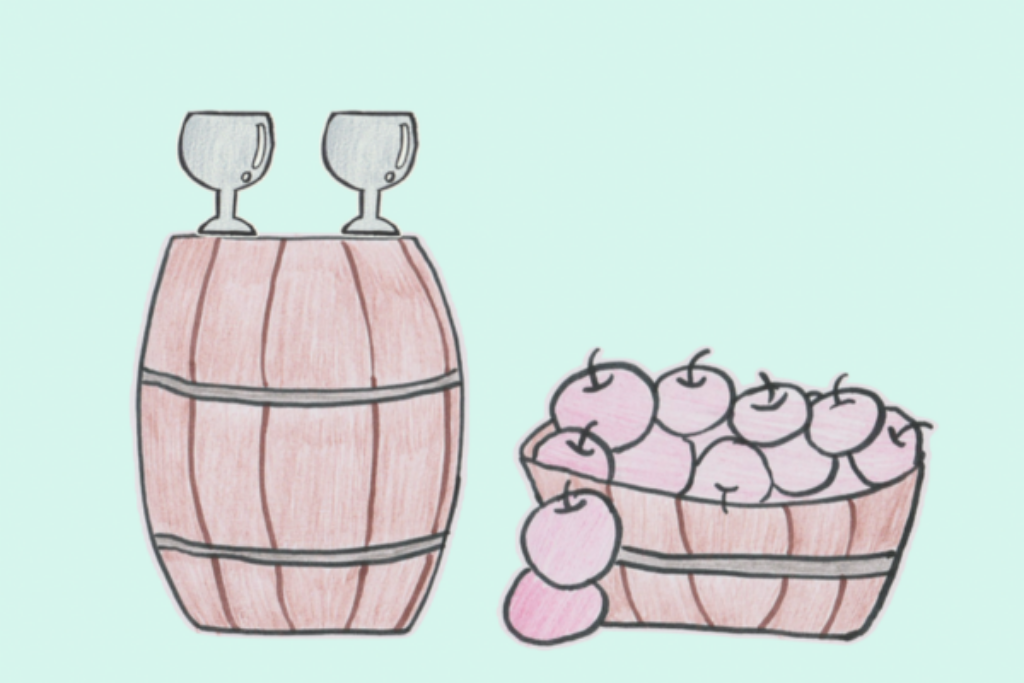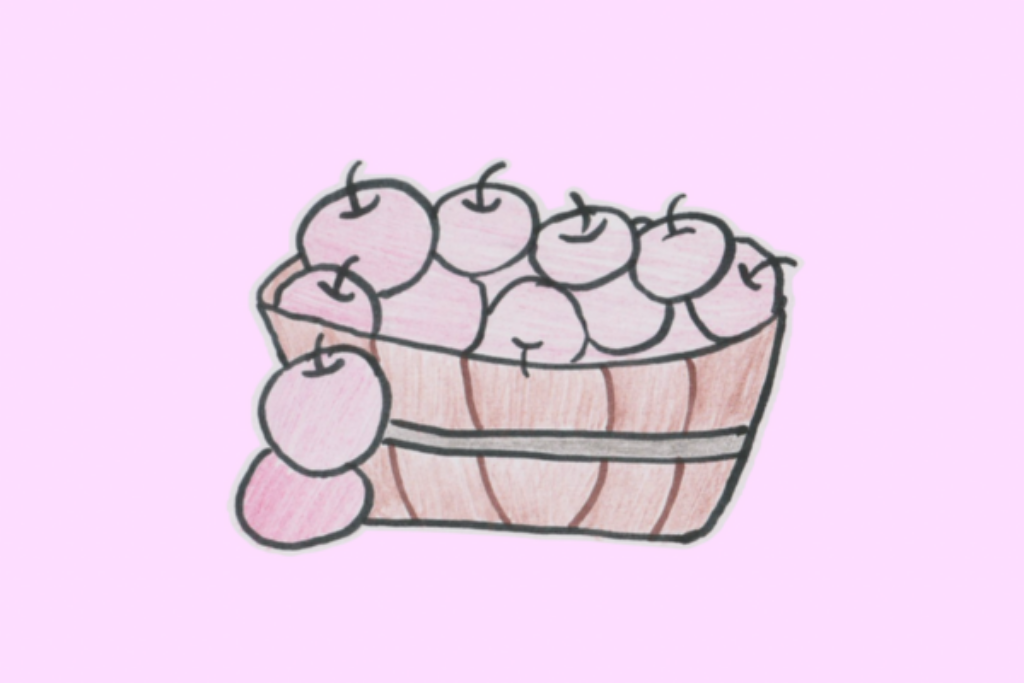Wine-tasting creates a more enjoyable and harmonious dining experience. Pairing a glass of wine with the meal of food can also be a fun and rewarding experience, as it can enhance the flavours of both the wine and the food. How do we choose the wine? and how do we taste the wine as a normal diner?
Generally, we use our senses to taste and judge whether the glass of wine is good or not, for example, seeing the colour, using our tongue to taste sweet or sour, using our nose to smell it and using our mouth to feel it.

Colour
Wine has usually 3 colour types: white, pink and red. If we skip some wine that is made in a specialised way, the majority of wine are white, red or somewhere in between. The wine colour is often determined by the duration length of contact with the grape skin. White wines are pale because the grape skin are discarded early in the production process.
The colour of white wine is determined by oxidation as well. The longer exposure to air, the more golden colour the wine become. The most common source of oxidation is barrel aging. On the other hands, the colour of red wine is also affected by aging. However, the colour change of red wine is opposite to that of white wine.
Taste of a glass of wine
In the gastronomic world, there are six tastes, which include sweet, sour, bitter, umami, salty and fat. When we eat some food or snip a glass of something, we can taste, smell and mouthfeel, which is a tactile sensation in the mouth, it simultaneously. In the wine-tasting, aromas is the important element.
Sweet or dry? Sour?
There are two dimension of wine taste: sweetness and acidity.
We usually describe wine as either sweet or dry. When the wine does not have any taste of sweetness, it will be described as dry. Sweetness can be found in wine. If sugar level is low, you may feel it dry.
On the other hand, apart from sweetness, there is another taste, sourness, in the glass of wine. Sourness comes from acidity. If acidity is low, you may feel mildly acidic, like in Chardonnay and Sherry. If the acidity level is high, you will feel it tart.
Fruity smell? and oaky smell?

For the aroma of wine, there are two dimension as well. They are fruity smell and oaky smell. The fruit intensity of a wine is a scale to judge the wine smell. Oakiness is commonly found in red wines and full-bodied white wines. Shiraz is a wine with high fruity smell and high oakiness.
How to describe the wine’s smell and taste
Sweet, sour, bitter and spicy are the common vocabulary describing the smells and taste. If we want to express it in more details, what adjectives are more appropriate? Here are some vocabulary that may be better to articulate the smell and taste.
- Grassy
- Vegetal
- Rustic
- Buttery
- Volatile
- Meaty
- Tar
- Tight
- Leathery
- Flinty
- Jammy
- Fruity
- Floral
- Citrusy
- Spicy
- Earthy
- Woody
- Nutty
- Smoky
- Savoury
- Herbal
- Mineral
- Zesty
- Tart
- Crisp
- Juicy
- Bold
- Robust
- Full-bodied
- Light-bodied
- Dry
- Sweet
- Sour
- Bitter
- Astringent
- Smooth
- Velvety
- Silky
- Tannic
- Balanced
Mouthfeel of a glass of wine
Mouthfeel is kind of physical sensation in the mouth. How many bubbles, the weight in body and how much tannin there affects the mouthfeel of the glass of the wine. Champagne and Prosecco is a very good example of bubble presence.
How to judge a wine weight is common question for a normal diner. The weight of wine is visible. You can see the wine sliding down on the side of a glass. If they fall slowly, it mean the body is heavier. The slower the drips fall, the heavier the wines. This aspect is about body texture of wine.
Tannin comes from grape skins. It is a strong antioxidant. It is a natural preservative of wine. If the wine has high level of tannin, you will feel more astringent.
For a casual diner, we can choose a bottle of wine to match your food in the meal, depending on your personal tastes. If you buy some bottle for storage, you should draw attention to the cork taint and storage environment at you home. The optimum storage temperature for wine is in the range of 10-15 Celsius degree in a dark environment.
Vegan wine enhances your wine-tasting joy
Have you heard about vegan wine? We should be raising a glass to this fantastic trend of vegan wine now. The rise in vegan wine production is driven by the combination of increased demand for ethical and plant-based products, the desire to cater to diverse dietary preferences, and the recognition of the environmental benefits associated with vegan winemaking.
What is vegan wine?
Vegan wine, also known as plant-based wine, is a type of wine that is produced without the use of any animal-derived products or by-products. Traditional winemaking processes often involve the use of animal-derived substances such as gelatin, isinglass that is derived from fish bladder, egg whites, or casein that is a milk protein to clarify or stabilise the wine. Vegan winemaking eliminates the use of these animal-based fining agents and instead relies on alternative methods.
What difference is there between vegan wine and traditional wine?
The main difference between vegan wine and non-vegan wine is the fining process. Vegan winemakers use natural alternatives such as bentonite clay, activated charcoal, or plant-based proteins like pea or potato proteins to clarify the wine. By avoiding animal-derived fining agents, vegan wines are suitable for individuals who follow a vegan lifestyle, plant-based diet practice or have dietary restrictions.
How do we know the bottle as a vegan wine?
There is still a long journey of shifting from traditional wine to vegan wine. The wine producers may change their practices over time, so it’s always a good idea to verify the vegan status of a specific wine by checking the winery’s website or contacting them directly. Additionally, vegan-friendly labelling or certifications such as “Certified Vegan” or “Vegan Society” logos can help identify wines that meet vegan standards.
Is there any benefit of drinking vegan wine?
Vegan wines often avoid the use of additives or allergens associated with animal-based fining agents. This can be beneficial for individuals with sensitivities or allergies to certain animal products. Besides, by opting for wines that do not use animal-derived products, individuals can support the reduction of animal exploitation in the winemaking process. Vegan wines also contribute to a more sustainable and environmentally-friendly industry. Vegan wine is suitable for individuals who follow a vegan diet or plant-based lifestyle.
There has been a notable increase in the number of people adopting vegan or plant-based lifestyles. As a result, the demand for vegan products, including wine, has risen. By producing vegan wines, winemakers can cater to this expanding market and meet consumer preferences. By supporting vegan wine, we are contributing to a more sustainable future for our planet.
Hope you will enjoy the glass of wine with a great food!







